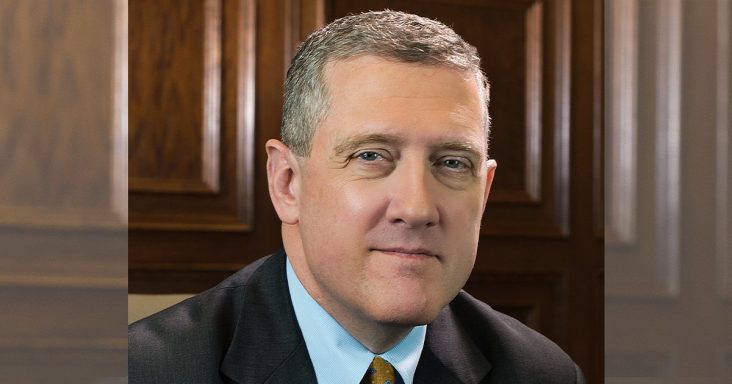Fed’s Bullard: Economic recovery possible by year-end
by September 25, 2020 1:18 pm 835 views

Economic activity is expected to show “outsized growth” in the third quarter, and a “full recovery” in the U.S. economy is possible by the end of 2020, said James Bullard, president of the Federal Reserve Bank of St. Louis.
In a webinar Thursday (Sept. 24) for the Global Interdependence Center, Bullard reported progress in managing the COVID-19 pandemic. The St. Louis Fed is located in the Eighth Federal Reserve District, which includes Arkansas and portions of six other states.
“I expect this rebound to continue in the U.S. as businesses learn how to produce products and services safely using simple, existing technology,” Bullard said.
U.S. monetary and fiscal policies have been effective and were designed to offset a larger shock than the one that has happened, he noted. But downside risk remains high, and the continued implementation of health policy will be important to maintain economic progress.
Bullard said daily fatalities per 100,000 people have declined from the peak levels in March and April in Europe and the United States. Meanwhile, East Asia and Pacific countries continue to report daily fatalities per 100,000 people that are lower than the United States and Europe.
“This suggests that key areas of global production are well past the initial phase of the crisis and are likely to continue to increase economic activity under new safety protocols,” he said.
Employment has recovered more quickly than expected and supports the idea that many layoffs were temporary as companies adjusted to the pandemic, he noted. “A back-of-the-envelope calculation suggests that there is room for a substantial decline in the official unemployment rate in the months ahead,” he added.
Third-quarter GDP is expected to rise rapidly, said Bullard, adding that the growth “may put the U.S. economy within reach of a sort of ‘full recovery’ by the end of 2020.”
Aggregate national income could reach the average level in 2019 by the end of 2020, he said. This would require GDP to rise 35% in the third quarter and 10.3% in the fourth quarter.
“These are big numbers, but not outside the realm of possibility,” Bullard said.
